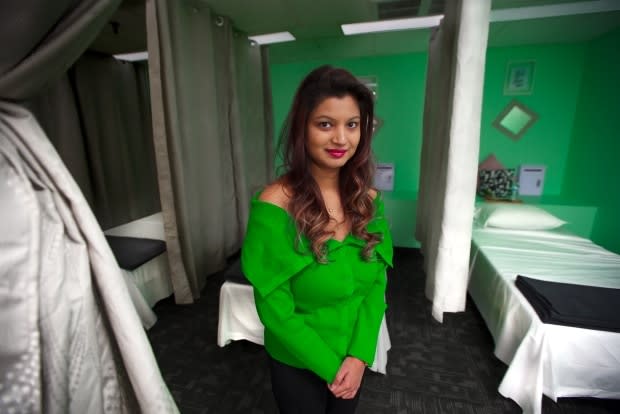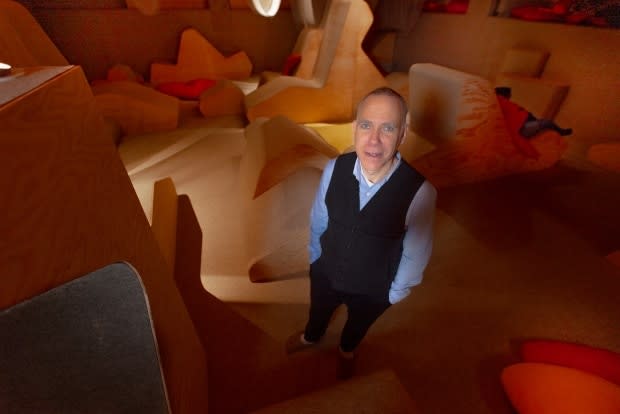Napping has been redeemed by health experts, but don't overdo it

It goes by many names. A nap or siesta, snoozing or dozing, a catnap or just catching 40 winks.
Winston Churchill indulged in a good nap, apparently because he believed it allowed him to get more work done during the day.
In a sleep-deprived world, catching a few zzzzzz's has its benefits. Research shows it can do everything from boosting your immune system to improving alertness.
A recent study, involving Swiss adults aged 35 to 75, found that a daytime nap taken once or twice a week could lower the risk of heart attack or stroke.
"Sleep is good for the brain and for the body," says Dr. Brian Murray, a neurologist at Sunnybrook Hospital in Toronto. Murray and his team run overnight sleep studies in his laboratory at the hospital.

"Sleep helps improve cognitive function, helps clear junk out of the brain and has benefits systemically in terms of your immune system, endocrine system and your general health."
Despite the health benefits of napping, researchers have found a nap should not be too long. A study in the journal Neurology warned that people napping more than 90 minutes were 25 per cent more likely to have a stroke.
The study of Chinese adults with an average age of 61 showed those who slept longer than nine hours a night, had poor sleep quality and/or took long naps of more than 90 minutes all showed greater risk of stroke.
For older adults, naps over 90 minutes are not good — it's excessive napping, says Dr. Atul Khullar, medical director of the Northern Alberta Sleep Clinic. He says a short nap can be useful, but longer ones can be disruptive.
"Excessive naps of 90 minutes, or a couple of hours, almost is a biological emergency. The body is not supposed to be doing that."
Other health experts say, if you need an afternoon siesta, keep in short — no more than 20 minutes. Longer than that could make you groggy.
Once frowned upon as a sign of laziness or indulgence, napping is gaining new respect.
In a 24-hour work cycle, where employees are often expected to work long hours, many companies have created nap friendly spaces.
"I think it's a function of a society that is sleep deprived," says Sunnybrook Hospital's Dr. Murray.
Watch: Some workplaces encourage napping
"Certainly companies would realize that an attentive, alert worker is going to do a better job. And I think improving cognitive function with a nap opportunity is certainly in their best interest."
Mehzabeen Rahman used to work in a job that came with long hours. She and her colleagues were often exhausted. So she created a nap studio in midtown Toronto that's open 11 a.m. to 5 p.m. on weekdays.
"I'm here to change that mentality of feeling guilty of taking a nap or being kind to yourself," she says.

The beds in her studio come with sheets, and a pillow, a water bottle and an eye mask. For $10, stressed-out workers can pop in the studio in Toronto to get a quick nap.
"Right now it's all the white-collar employees all around the area. They're working different fields, technology, investment, doctors, lawyers. So they're the ones who work long hours who need the naps in between," says Rahman.
At an art installation at the University of Toronto, napping is not only encouraged, but celebrated.

The installation is located in the bowels of the building. Participants enter through a felt curtain and enter the main space that's been replicated to look and feel like a cave. The floors and walls are lined with soft felt that dampens any sound. There are resting areas with large felt-covered chairs where participants can engage in rest, relaxation and meditation.

"We thought, what better place to stage an experiment in slowing down and in being able to take some repose during the day than in a school of architecture," says Richard Sommer, the dean of the faculty of architecture.
"Our students have become more stressed out and have had increasing levels of anxiety because of our plugged in life," says Sommer.
Robert Raynor, a first-year architecture student, came for quick snooze to decompress.
"Especially towards the end of the semester, it tends to be relatively stressful work. We work long hours and it's really nice in the middle of the day just take a little bit of a break."


